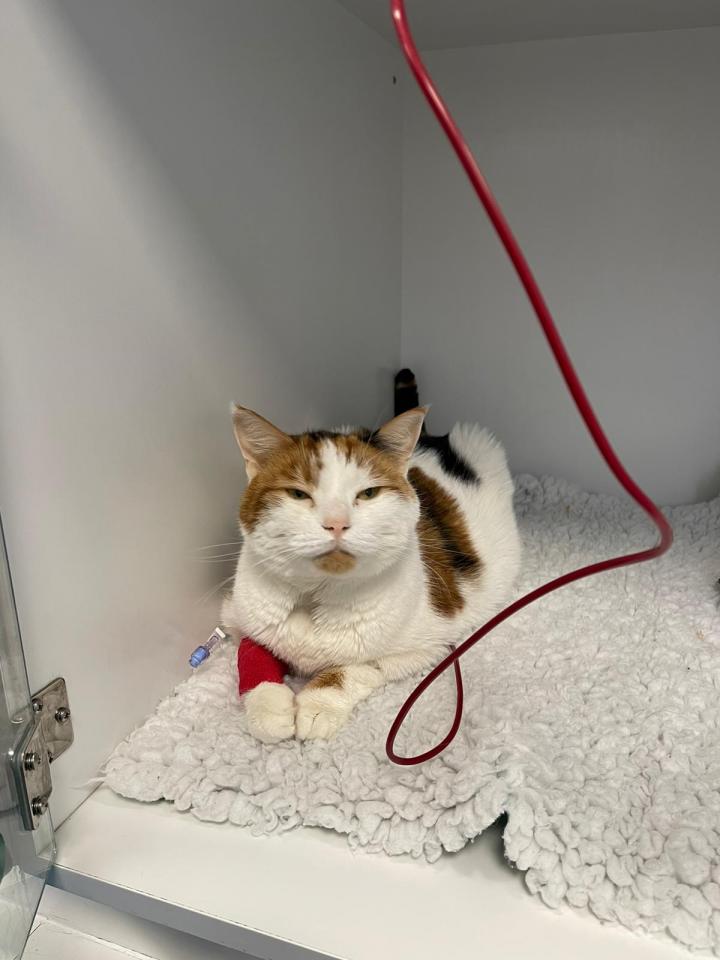
Credit: Image: Samantha Taylor, BVetMed(Hons), CertSAM, DipECVIM-CA, MANZCVS, FRCVS
Blood transfusions are a common procedure in medical practice in which donated blood is used to replace blood lost to injury or surgery or to treat serious medical conditions. The procedure is not performed as routinely in the treatment of pet cats – but, as in people, can be lifesaving. The availability of donors has been a limitation in primary care veterinary practice, but with the growth of blood banks providing greater access to feline blood, the procedure is likely to become more commonplace.
To address the need for authoritative guidance, not only on best practice but also some important considerations beyond the clinical procedure itself, the International Society of Feline Medicine (ISFM) has today published consensus guidelines in the Journal of Feline Medicine and Surgery (JFMS).1 The authors, an international panel of veterinary experts with individual expertise in infectious disease, anaesthesia, critical care and medicine, have cumulative clinical experience in the collection of blood and administration of transfusions gained in the treatment of thousands of feline patients.
Blood is a precious resource harvested for the benefit of one cat (the recipient), with no benefit for the other (the donor). A basic tenet of the ISFM’s advice is that the clinician has responsibility to care appropriately for both parties.
Managing a patient that requires a blood product is clinically challenging. Identifying the need for a blood product is just the first step. The clinician needs to establish a clear-cut benefit to the recipient and, critically, must ensure that type-compatible blood is administered. This requires blood typing of both the donor and recipient cat. Whether an individual is type A, B or AB in the so-called ‘AB’ blood group system that exists in cats is partly influenced by geography as well as by breed. Type A is the most common phenotype worldwide, and Siamese cats, for example, are believed to be exclusively type A. Type B is much lower in prevalence, though is reported to be not uncommon among non?pedigree cats in Australia and also among British Shorthair cats. Type AB is rare.
Blood types arise due to genetically determined antigenic markers (alloantigens) present on the surface of red blood cells. Cats, unlike dogs, possess naturally occurring alloantibodies against ‘foreign’ (non?self) alloantigens. This complicates the process of blood transfusion and can lead to potentially fatal blood transfusion reactions. While the risk of a transfusion reaction increases with subsequent transfusions, a reaction may arise even with a first blood transfusion. In addition to blood typing, the guidelines discuss the benefit of ‘cross-matching’, whereby blood from the donor and recipient cat are mixed to test for a reaction before a transfusion is undertaken, and strongly recommend that cross-matching is undertaken for any recipient with an unknown transfusion history or that has had a previous transfusion reaction.
One of the particular challenges surrounding blood transfusion in cats is that there are risks also to the donor – in terms of the sedation that is often required, as well as the venepuncture and removal of blood itself. Although careful technique can help mitigate the risks, this represents a relatively unique situation in clinical veterinary practice in that a specific intervention has no benefit for the donor animal. Indeed, in an accompanying appendix discussing the ethical considerations of blood transfusion, the guidelines acknowledge that ‘donor’ may be inappropriate in this context, as it implies consent or a ‘gift’ that cats themselves are unable to decide to give. ‘Harvesting’ may be a more accurate, albeit less comfortable, term for blood collection.
Often donors are cats owned by clinic staff, or other cats belonging to the owners of recipient cats; sometimes donor cats may be volunteered after a public appeal. Many veterinary clinics maintain a register of suitable donors to call upon when needed. In some areas, unowned cats may also be used. The guidelines emphasise that the clinician’s duty of care extends to the owner or caretaker of the donor cat, who must be well informed of the process and risks. To assist in this, International Cat Care, the parent charity of ISFM, has created a resource (available at icatcare.org/advice/cat-carer-guides) explaining what to expect if owners are considering volunteering their cat as a blood donor or, indeed, if their cat is requiring a blood transfusion. Where pre-collected blood products are purchased via a blood bank, the provenance of the blood products, and welfare of the donors supplying the blood bank, must likewise be confirmed by the clinician.
Well-informed decision-making around the use of blood products in cats requires the veterinary clinician to carefully balance the clinical benefit to the recipient cat, the suitability and welfare of the donor cat, and ethical justification for the procedure. The aim of these new guidelines is both to facilitate this process and help to ensure that the health and wellbeing of recipient and donor cats is equally prioritised.
###
References
1. Taylor S, Spada E, Callan MB, et al. 2021 ISFM consensus guidelines on the collection and administration of blood and blood products in cats. J Feline Med Surg 2021; 23: 410-432. Available at: https:/
Media Contact
Margaret Melling
[email protected]
Related Journal Article
http://dx.




